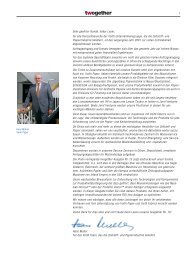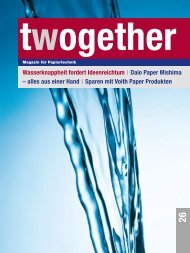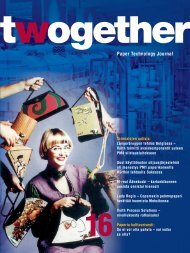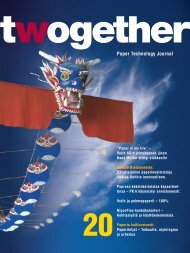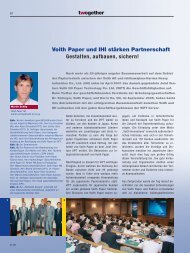You also want an ePaper? Increase the reach of your titles
YUMPU automatically turns print PDFs into web optimized ePapers that Google loves.
68<br />
Fig. 5: Bundled<br />
Washi paper.<br />
Fig. 6: The fibre<br />
strands are spread on<br />
a cherrywood board.<br />
Fig. 7: A papermaker<br />
skimming off a paper<br />
sheet with a bamboo<br />
screen.<br />
Fig. 8: Finishing<br />
Washi paper with<br />
plant dyes.<br />
Fig. 9: Ibe-Washi.<br />
<strong>17</strong>/04<br />
5<br />
6<br />
8<br />
material, Japan’s own paper culture began<br />
to thrive and shook off the once predominant<br />
Chinese and Korean influence.<br />
During the Heian period (794-1185) a<br />
large paper mill was established in Kyoto,<br />
then the Imperial capital of Japan, to<br />
make paper for public use. The paper mill<br />
also dyed paper and trained papermakers,<br />
so that the craft spread rapidly all over<br />
the country. With its abundant forests<br />
and clear mountain streams, the Japanese<br />
environment was extremely suitable<br />
for the production of top-quality paper.<br />
Very soon Washi was also used for correspondence,<br />
keeping records, Zen poetry<br />
(Japanese Haiku) and wood engravings.<br />
In the <strong>17</strong>th century Japan's strong but<br />
flexible and translucent paper started to<br />
penetrate many aspects of daily life:<br />
Washi was used to cover the sliding walls<br />
of Tatami rooms, and also for lampshades,<br />
umbrellas, bags, flags, masks<br />
and blinds.<br />
At a very early stage, paper was used as<br />
a ritual material in numerous Shinto and<br />
7



